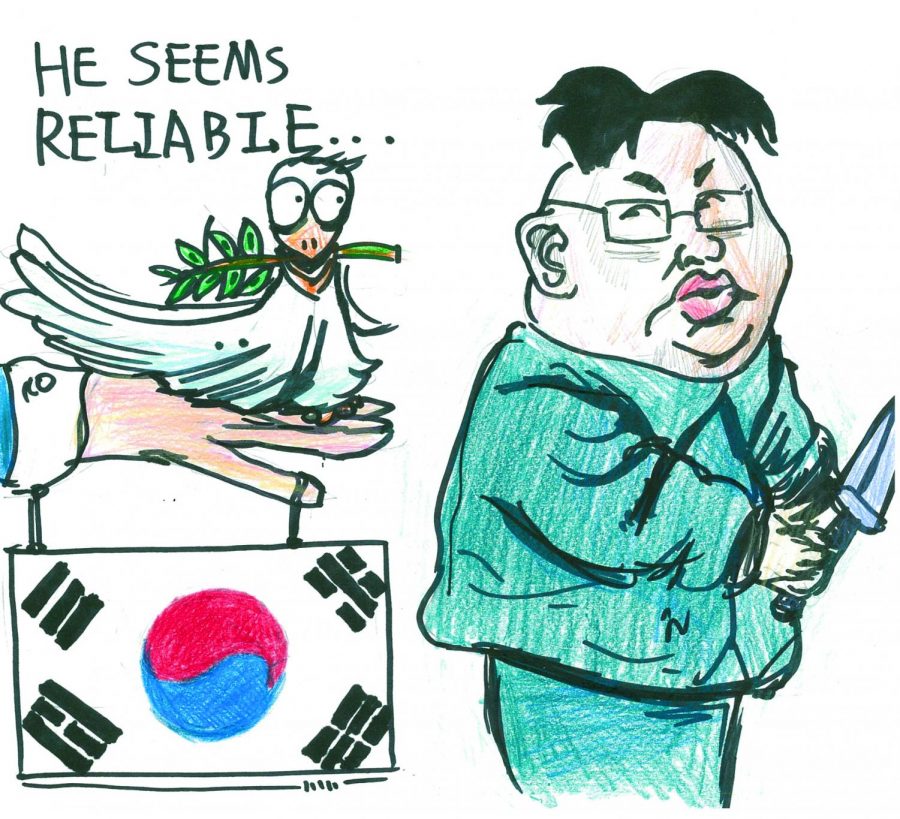Historic Summit Between Koreas
The Korean War has separated thousands of family members from their loved ones for over half of a century. North and South Korea have periodically organized reunions across the border, but since 1988, over 75,200 South Korean applicants have died without reuniting. At an unexpected summit on Wednesday, September 19, South Korean President Moon Jae-in and North Korean Supreme Leader Kim Jong-un met in Pyongyang, South Korea, to work towards a peace deal, which they hope to finalize by the end of 2018. For thousands of divided families, a peace declaration could mean an opportunity to see relatives again.
At the summit, Mr. Kim signed an agreement to dismantle a major missile facility under the supervision of outside parties. He further stated that North Korea is willing to take steps to denuclearize, with the condition that the United States agrees to an end-of-war declaration. However, Washington asserts that North Korea has not followed through on previous commitments to denuclearize, so it remains skeptical about the viability of a deal. Jean H. Lee, director of the Wilson Center for Korean History and Public Policy, said, “You have South Korea moving so quickly on these projects to push for reconciliation with North Korea, and in Washington you have people pushing for denuclearization before anything else happens. They have very different end games and very different time frames. It’s very problematic.”
While the governments of South and North Korea declared a cease-fire in 1953, the nations never signed an official peace declaration and thus have remained at war since the conflict’s commencement in 1950. Mr. Moon’s and Mr. Kim’s meeting raises the potential for more open relations between the two nations. However, U.S. officials worry that an official end to the war could have negative consequences for the U.S.’s relationship with Seoul, especially if the decision does not come with significant denuclearization progress in North Korea. Andrew Griffin, technology editor and science reporter at The Independent, wrote, “Many in Washington worry that [a peace] declaration could undermine the justification for keeping U.S. troops in South Korea and weaken the U.S. alliance with Seoul.”
The South Korean government claims that a peace deal is an important step in the eventual denuclearization of North Korea, since the declaration could increase pressure on North Korea. Mr. Moon has advocated for improved relations between the two Koreas and has mediated between the North and the U.S. in past negotiations. Lee Do-hoon, South Korea’s top nuclear negotiator, said, “I think this is proof of what our government has explained all along, that improvement in inter-Korean relations can lead to progress between the North and the United States.”
Crowds of North Koreans cheering reunification greeted Mr. Moon as he arrived at the airport and rode down the streets of Pyongyang in a motorcade. However, for many citizens of South Korea, the prospect of reunification is becoming less appealing as the differences between the two Koreas become more apparent. In addition, the cost of reunification may be too great for South Korea’s current economy to bear. Shane Kim ’20 said “I think reunification is not the perfect solution. It has been 60 years, which means we can basically call [North Korea] a different country now.”
While the summit does not guarantee immediate progress, many believe that a vastly different, unified Korean Peninsula could emerge in the future. Ian Gill ’19, co-head of the Hotchkiss Political Union, said, “If [North Korea] is able to embrace democracy, get away from its dictatorial history, and embrace human rights, then I think there is the possibility, decades from now, for a reunification.”






